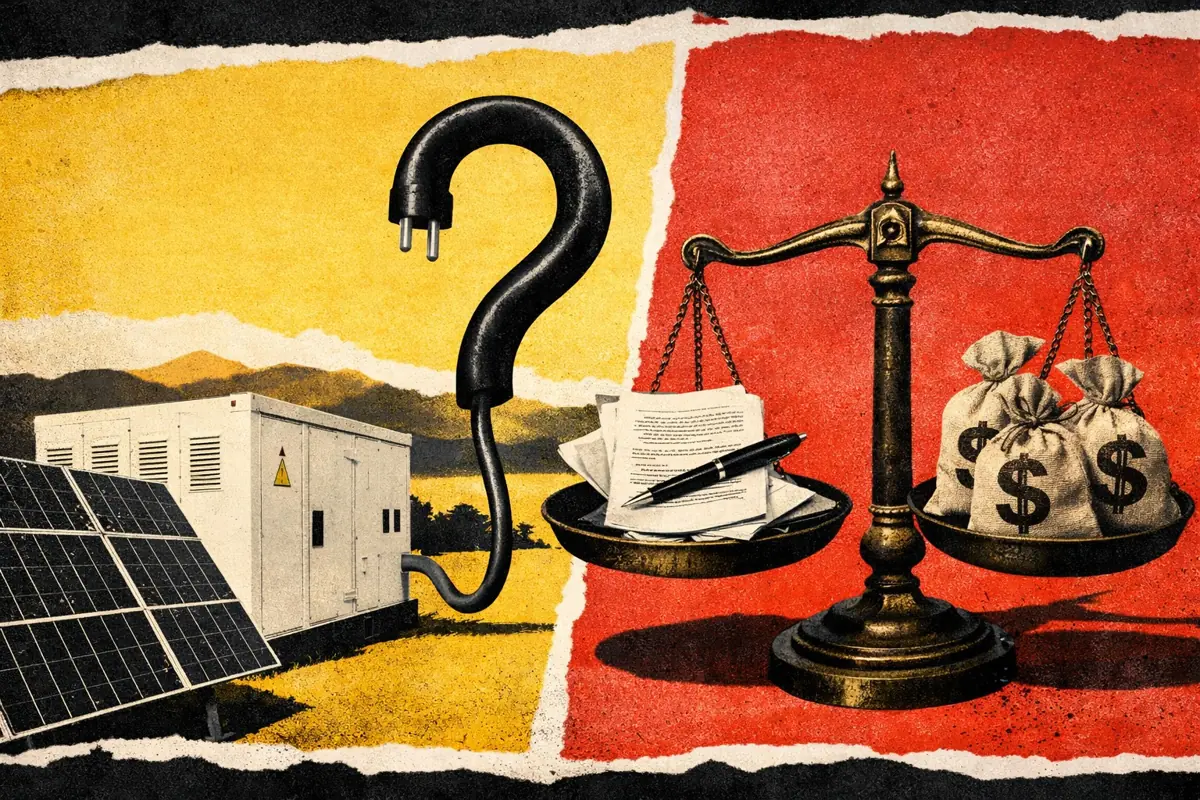STOR prices, Part One: Why are prices so crazy in STOR?
The day-ahead Short Term Operating Reserve (DA STOR) auction launched in April 2021. One thing’s for sure: it hasn’t been boring. We’ve seen wild day-to-day fluctuations in price, 1-penny bids, and lots of liquidity. In this article we explore:
- The story so far.
- Why prices have been so volatile.
- The problem with overholding.
- Upcoming changes to the service.
The story so far
The DA STOR auction launched in April 2021, following National Grid Electricity System Operator’s (NG ESO) decision to suspend STOR procurement during 2020. The new auction was launched to align with changes in European legislation, (the Electricity Balancing Energy Guidelines - EBGL) and brought with it shorter contracts and closer to real-time procurement.
But what’s been happening since the service launched? Let’s take a look at market size, who’s been participating, and how much they’ve been earning.
How big is the STOR market?
Figure 1 (below) shows the ESO’s daily STOR procurement and rejected capacity.

- Since launch, procurement levels have remained constant at ~1300 MW. This is reflective of a 1700 MW STOR requirement, partially met by 400 MW of long-term legacy contracts.
- The DA STOR auction has an average tendered volume of 2.2 GW, with 165 unique units participating since service inception.
Who’s in the market?
Figure 2 (below) shows who is participating in the DA STOR auctions, by both organisation and technology type. Both graphics below are based on the total cost of delivering the service since its launch in April 2021.

- Uniper is the largest STOR provider, taking home 19% of revenues from the service.
- Thermal generation provides the lion’s share of STOR capacity, with open-cycle gas turbines (OCGTs) being the dominant technology type.
What’s happening with prices?
The DA STOR auction uses pay-as-clear pricing, with all successful providers receiving the maximum accepted bid price. Figure 3 (below) shows the market clearing price since the service launch.

- On average, the market has cleared at £2.30/MW/h, with highs of £6.50/MW/h and lows of £0.01/MW/h.
- The big story on prices has been volatility - we’ve seen a lack of consistent pricing, with daily swings of up to £5.55/MW/h.
But what has been causing price volatility? Let’s explore!
Price volatility and overholding
In order to understand STOR pricing volatility, we need to take a brief detour into how the STOR auctions work. Specifically, let’s focus on two important factors:
- NG ESO will currently not accept any bids which result in holding capacity above their procurement target. This is known as overholding.
- STOR participants aren’t using curtailable bids as much as the ESO expected.
What does this mean in practice? Let’s take a look at an example supply and demand diagram to explain this in more detail. Figure 4 (below) shows two things:
- The ESO demand for STOR - How much of the service they are willing to buy, and the maximum price they’re willing to pay.
- The market supply for STOR - Every bid entering the auction, including tendered volume and bid price. Bids are ordered from lowest to highest price to form the supply stack.
The ESO then accepts bids (starting with the cheapest) until it meets its procurement targets, providing they don’t exceed the price cap or volume cap.

In this example:
- The ESO accepts the two cheapest bids, as neither exceeds the price cap or the volume cap.
- NG ESO rejects the next cheapest bid to avoid overholding. Crucially, this bid is non-curtailable, and as such cannot be partially accepted.
- In order to meet the demand requirement exactly, the ESO accepts the more expensive bid.
- As the most expensive accepted bid, this sets the clearing price at £5/MW/h.
- The auction is cleared with 100 MW of 24-hour contracts awarded, at £5/MW/h - a total cost of £12,000 (100 MW x £5/MW/h x 24h).
Importantly, the above example illustrates how the combination of no overholding and no curtailable bids can result in the acceptance of expensive bids, high clearing prices and ultimately a high service cost.
This is what has been driving volatile prices in the DA STOR market. When the ESO encounters potential overholding, prices spike. When there are sufficient curtailable bids to perfectly match demand, prices remain low. This is why STOR prices have been so crazy!
But what about curtailable bids?
In the DA STOR auction, the ESO allows for curtailable bids - a bid that can be accepted at partial capacity. For example, if the ESO only requires an additional 5 MW to meet procurement targets, a 10 MW curtailable bid would be accepted at 5 MW.
In theory, curtailable bids should solve the problem of overholding. However, STOR providers have been reluctant to utilise curtailable bids. NG ESO surveys have shown that providers believe curtailable bids present numerous technical and commercial challenges.
Can overholding actually be cheaper?
If the ESO overholds STOR capacity, they have to pay for additional MWs they aren’t going to use. Intuitively, this doesn’t feel very cost-effective. The example below shows how overholding can, in fact, be the cheaper option. Let’s look at the same example auction as before, but this time allowing for the possibility of overholding (see Figure 5).

When overholding is allowed, 150 MW is procured, 50 MW more than required. However in this case the market clears at £1/MW/h. This equates to a cost of just £3,600 (150 MW x £1/MW/h x 24). Even though the ESO has bought extra capacity, the cost is reduced from £12,000 to £3,600!
How has this played out in practice?
While the above example is useful to understand what’s causing price fluctuations, to fully appreciate why this is important, it’s useful to look at an actual DA STOR auction. Figure 6 (below) shows the supply stack from 13 June 2021 - one of the more extreme examples of how overholding constraints have impacted the STOR market.

As with the example above, the ESO’s rules on overholding prevent the acceptance of lower-priced bids. The ESO is then forced to accept a much more expensive bid to match supply and demand perfectly.
- If you’re bidding in the STOR auction, this is great news - the ESO’s aversion to overholding caused the market to clear at £5.75/MW/h. If overholding were allowed, the clearing price would only have been £0.10/MW/h.
- If you’re the ESO (or the end consumer), this isn’t so great - the cost of running the service jumped from £3,170 to £180,918. That’s not a typo - the auction rules meant that NG ESO spent 60 times more than they needed to!
Changes to the STOR market
Given the ESO’s obligation to minimise cost to the end consumer, something needed to change. On 29 July 2021, NG ESO published a letter to the industry, outlining changes to STOR procurement.
Specifically, the proposal states that both underholding and overholding STOR capacity will be allowed, as long as it reduces the overall cost of the service.
Currently, the changes are undergoing consultation and awaiting a decision from Ofgem. If everything goes to plan, the changes should go live by the end of November.
But how will the changes actually impact the market if/when they go ahead? That’s the questions we’ll be answering in Part Two. Click here to carry on reading!







